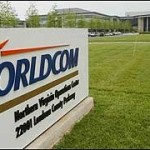Search results for: Ansoff Matrix

1. Introduction Once the largest provider of internet-based communication services and the second largest long-distance telephone company in the US, WorldCom became one of the most popular case studies for corporate ethics, financial frauds and senior management irresponsibility along with Enron. This article contains analysis of the fall of WorldCom employing four-stage fundamental analysis. The article starts with discussions of business strategy in general and analysis of strategies that exposed WorldCom to major risks in particular. This is followed by analysis of analysis of accounting practices used at WorldCom. Moreover, the article contains discussions devoted to financial analysis and the role of auditors in relation to WorldCom case study, as well as, prospective analysis that addresses valuation models employed by WorldCom accountants. This article is completed by reflecting upon important lessons to be gained from this particular case study for international business practices. 2. Business Strategy Analysis: Strategies and Practices that Exposed WorldCom to Major Risks Business strategy analysis is the first stage of the four-stage fundamental analysis of the business entity. Business strategy analysis associated with in-depth study of effectiveness and sustainability of competitive advantage of the company. Business strategy is a broad topic with multiple facets with varying levels of impacts on firms’ competitiveness and long-term growth. займ на карту мгновенно круглосуточно без отказа According to the framework of Porter’s Generic strategies (1985) businesses can base their competitive advantage on differentiating products and services or offering products and services for competitive prices. Importantly, the choice between is faced by overall businesses entity, as well as, separate segments within the entity. Primarily, WorldCom’s business strategy was most related to cost advantage, offering discount long-distance telephone services, according to the former name of the company Long Distance Discount Services Inc. (LDDS). However, as the company entered the phase of massive expansion…
Theory can be defined as “a formal logical explanation of some events that includes predictions of how things relate to one another”[1]. Concepts are “collectives used to label certain bits of experience. In other words, they are elementary constructs by which reality is classified and categorised”[2]. Alternatively, concepts are “mental constructs or images developed to symbolise ideas, persons, things, or events”[3] Model can be defined as “a set of ideas and numbers that describe the past, present or future state of something”[4] A framework is “a system of rules, laws, agreements, etc. that establish the way that something operates”[5] A tool is “a thing used to perform a job”[6]. There are many theories, concepts, models, frameworks and tools in the area of business that you will have to use at some stage of your studies. The following are the most popular ones listed in alphabetical order: Change Kotter’s Eight Steps Model Lewin’s Force-Field Theory of Change Lewin’s Model of Change Consumer behavior Behaviorist approach to consumer behavior Cognitive approach to consumer behavior Consumer buyer behavior Consumer decision making process Customer perceived value Economic Man approach to consumer behavior Model of Goal Directed Behavior Psychodynamic Approach to consumer behavior Theory of Trying Corporate Social Responsibility Approaches to CSR Carrol’s CSR Pyramid Code of Ethics Culture Cross-cultural competencies Cross-cultural management Elements of organizational culture Harrison’s Model of Culture Hofstede’s Cultural Dimensions Trompenaars and Hampden-Turner Cultural Dimensions Economics Foreign Direct Investment Inter-industry and intra-industry trade Liberal and coordinated market economies Specialization for developing countries Theory of absolute advantage Theory of comparative advantage Human Resources Management Cognitive Theory of Training Transfer Continuous Professional Development Equity Theory of Motivation Employee training and development Forms of training transfer Frederick Hertzberg’s Two Factor Theory Hertzberg’s Motivation and Hygiene Factors Honey and…
